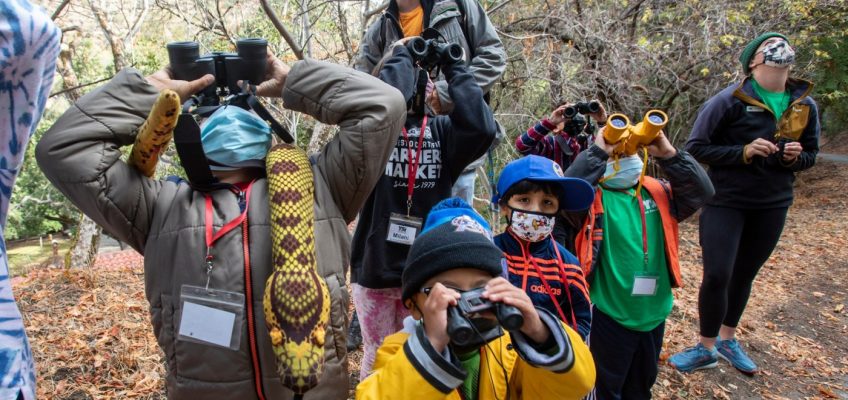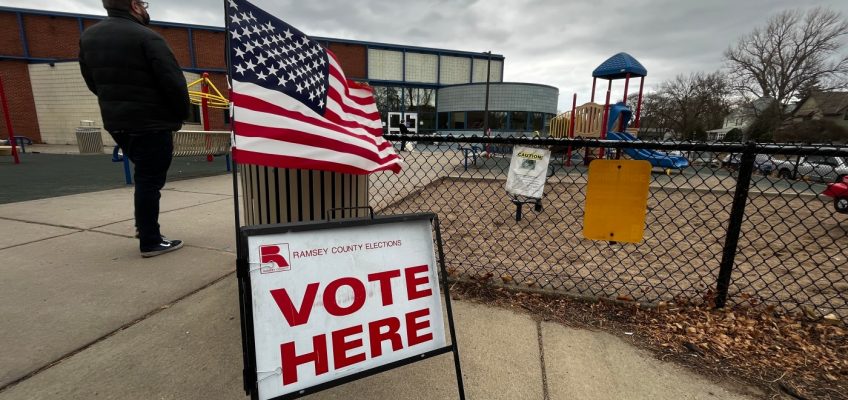So you want to try birdwatching, or as some of us call it, birding.
Something about our feathered friends has grabbed your attention. A great-horned owl, perhaps, hooting outside your window after dusk. Or an American robin slurping worms from your lawn. Maybe you spied a group of birdwatchers at the park across the street, hot on the trail of a rare warbler and, well, you want in on the action.
Could be you simply overheard the ongoing debate of birb, borb or floof. Translation: which bird is cute, which bird is round, which bird is fluffy? You will have opinions on this – I know I do.
Or maybe you’ve had a “spark bird,” a creature so magnificent, it sparked your interest in birding.
BirdNote, a popular radio show, provides wonderful two-minute stories on how birds capture our imaginations. When I was on the show, I told interviewer Mark Bramhill my spark bird was a Vermillion Flycatcher, a glorious ruby. It’s a shining jewel of plumage and attitude. This bird is a show-off. Within a few months of spotting my first one, I was hooked.
Soon, I was tweeting endless images of birds I’d seen. That’s how “BirdNote” found me. And that was my first lesson in the benefit of birding: Capturing our excitement about nature can help lure others into the same appreciation for birds and the discovery that they can inform your life, send you on adventures, involve you in mystery.
The thing about birding is anyone can do it. Old, young, disabled, experienced, inexperienced. And you can bird just about anywhere: a park, a city street, a forest, along a shore, deep within a nature preserve.
Tools of birding
Get yourself a copy of “The Sibley Guide to Birds: Second Edition,” which brims with wonderful drawings as well as quick reference guides for how to examine field marks and body types.
Lightweight birding “bins” — binoculars — make all the difference. The full wealth of bird colors can’t be seen without binoculars. And that bird perched 50 yards away in a tree? You won’t see every field mark, and might not be able to see if it has stripes on its tail. Bins range from a low-end $50 pair to get you in the game up to thousands of dollars. I found my $450 Zeiss on “The Audubon Guide to Buying Binoculars.” That $50 pair is listed there too.
Let’s talk apps, too, because we’re in a birding revolution. Tech is rapidly approaching the ability to fully identify all birds within your listening range, and apps like Merlin Bird ID can help you identify birds you’re hearing and seeing. From what I’ve seen, it’s about 80 percent accurate. Your experience and common sense will help you know when any app is fooling you. That jackhammer a mile away? It’s not a Pileated Woodpecker no matter what your phone says.
Sign up for eBird or iNaturalist so you can log birds from trails and submit your checklists for approval by county moderators. Logging birds helps you keep track of your lists, your overall counts at hotspots (in your county, state, country) and life birds (bird species you’ve seen over time). You can also use your phone to record birdsong and upload your audio.
Keeping online bird lists also connects you to the greater birding collective. The data you provide helps ornithologists understand migration patterns and nesting habits and connects you to other birders.
A camera helps you capture the sights and provide proof, especially when you find a rarity. I use a Nikon P950 point-and-shoot that has a built-in super zoom. It literally has a “birding” setting. It isn’t perfect, but it’s light and it does the job. (I used to take pics through my binoculars with my iPhone, too.)
Birding adventures
You can stick to your backyard for your birdventures, if you’d like. Put out a dish of water or buy a bird bath, hang bird feeders, then peek out your windows and log all your feathered friends.
Or you can go all in, hike up mountain trails, walk boardwalks and grassland trails, hit nature preserves and state parks – with a friend or a whole group of fellow birders. Local birding groups — Audubon, MeetUps and more — organize outings, hold classes and offer field trips to local parks and preserves.
Most of my adventures are either solo or with one or two other birders. Recently, I joined Kai Mills, 23, a bird nest surveyor from Lafayette, to go birding at a nature preserve and a botanical garden along the central California coast. We were joined by Mike Bush, 70, a retired lecturer for horticulture and crop science who has been a director of botanical gardens in such places as Singapore, Bermuda and Oklahoma City. I met both of these experts while searching for birds.
At Sweet Springs Nature Preserve in Los Osos, I began telling Mills about a bird seen at the preserve, a real mystery. It was a half dark-eyed junco, half white-crowned sparrow – an intergeneric hybrid so rare there was no way to log it except as a generic sparrow species. Doing so loses this bird in eBird’s system. It becomes a nothing, an anomaly. Just as I mentioned the bird, Mills spotted it foraging at the base of a tree. Slightly larger than a junco, it shared field marks of both species. Even its song was a strange, junco-like trill that ended in “zeet zeet zeet.”
It felt like a victory to even find this bird — and that sense of discovery is half the appeal of birding.
Mills started birding when he was 12, back in Lafayette, where he’d visit a rare swamp sparrow every weekend. “I re-spotted it after it was originally found,” he said. “After that I was the first to find it every year for five winters.” He told me how he watched it join a sparrow flock, forage along reeds. “I knew its habits, where it would be at different times of the day.”
He said it was rewarding showing other birders that sparrow. He said it helped form his birding habits, and it’s why he stresses the importance of frequenting your local spaces.
“Find a local birding spot you really love,” he said when we discussed advice for new birders. “You can familiarize yourself with common birds and their songs that way. Do that before you start chasing other species.”
I took that advice to heart. I regularly visit a park near my home, and last year, found a golden-winged warbler, a bird so rare, it has been logged less than a hundred times in California. It’s only because I know that park so well, all its birds and birdsong, that I was able to be in position to spot this little bird foraging in a lemon tree.
Ask yourself: What might I discover?
Here’s the thing: birding can be consuming. You might aim for a Big Year – that’s what birders call a challenge to identify as many species as possible within a single calendar year and within a specific geographic area like a county, state, maybe even a five-mile radius from where you live – but it’s not really a game.
So make your birdventures count. Make them fun. Fill them with knowledge and wonder.
Resources
Audubon Society: Find Audubon guides to birding binoculars and other resources, including local chapters and some tongue-in-cheek explanations on the difference between borbs and floofs, at audubon.org.
eBird: Managed by the Cornell Lab of Ornithology, eBird helps passionate birders and newbies alike find birding hotspots, track their finds and share their discoveries with fellow birders and the scientific community; ebird.org.
iNaturalist: This digital tool, a joint effort from the California Academy of Sciences and the National Geographic Society, lets you document not only Bay Area birds but flora and fauna of all kinds and share it with others; inaturalist.org.
Merlin Bird ID: This free app from the Cornell Lab helps you identify birds and bird songs, save birds to your life list and explore lists of birds near you; merlin.allaboutbirds.org.
BirdNote: These two-minute daily radio shows are broadcast on 250 NPR stations and via podcast. Listen at www.birdnote.org.
This story was originally published by Southern California News Group on July 28, 2022.




